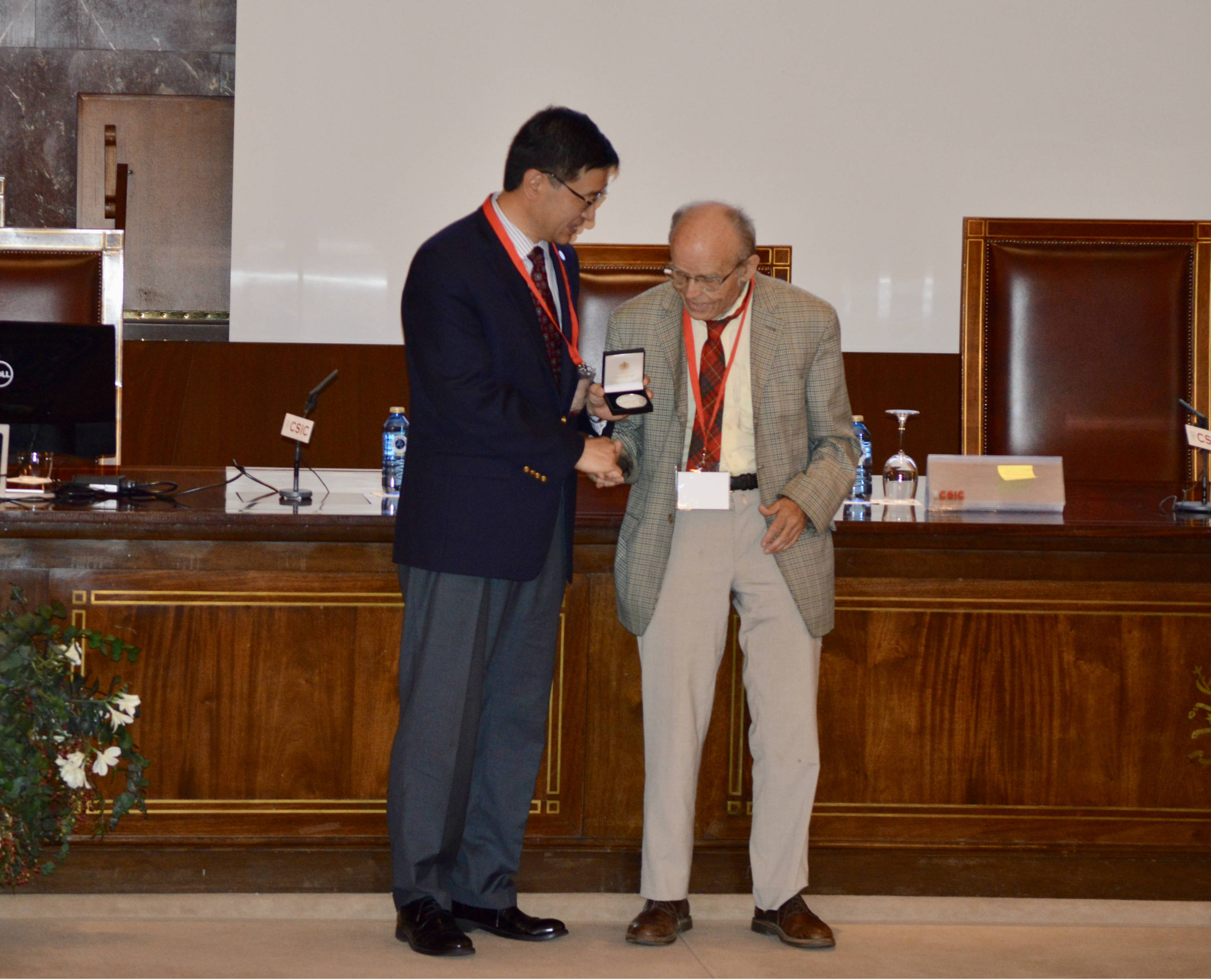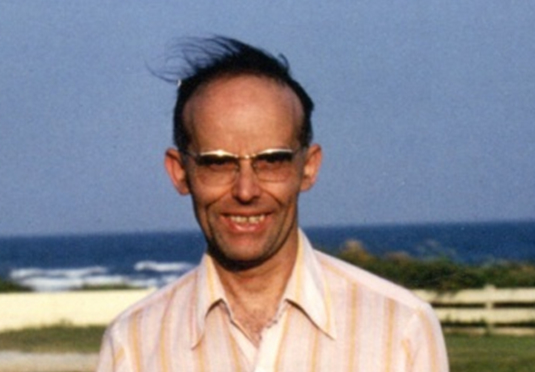Pierre Boutron Named CryoFellow
Pierre Boutron has recently been announced as the 2018 Society for Cryobiology Basil J. Luyet CryoFellow. 
Pictured Above: Society for Cryobiology President, Dayong Gao, presents Pierre Boutron with the Basil J. Luyet Fellow Medal during the opening ceremony of CRYO2018, held July 10, 2018.
Dr. Boutron is recognized today as the man who taught us how to understand the amorphous, or non-crystalline, state of solutions of cryoprotective agents, however as early as 1978 he was also the first person to envision achieving vitrification at low cooling rates using high concentrations of cryoprotectants. That was one reason he sought to understand the conditions required to prevent significant quantities of ice from forming during either cooling or warming. It was also the reason he set out to discover novel cryoprotectants that would favor vitrification.
In his 1978 manuscript 'Stability of the Amorphous State in the System Water-Glycerol-Dimethylsulfoxide' published in Cryobiology lengthy tables show in great detail the amount of ice formed in different solutions at different warming rates and temperatures based on differential scanning calorimetry, or DSC, which Dr. Boutron introduced into the field of cryobiology. He also displayed rigorous proof of the absence of ice by X-ray crystallography, or elucidation of the apparent form of ice when ice did form. This paper also introduced the fundamental concept of the existence of critical cooling and warming rates, without which vitrification can hardly even be correctly discussed today.
 Dr. Boutron was also unique in introducing many new candidate cryoprotective agents into consideration, including some, like levo-2,3-butanediol, that inspired much work on the part of others because of its amazing and previously unknown vitrification tendency. He also characterized, with his collaborators, a large number of cryoprotectant solutions, providing a wealth of information that enabled many comparisons to be made between the stability of the amorphous state across very dissimilar solute systems.
Dr. Boutron was also unique in introducing many new candidate cryoprotective agents into consideration, including some, like levo-2,3-butanediol, that inspired much work on the part of others because of its amazing and previously unknown vitrification tendency. He also characterized, with his collaborators, a large number of cryoprotectant solutions, providing a wealth of information that enabled many comparisons to be made between the stability of the amorphous state across very dissimilar solute systems.
However, his pièce de résistance was his fourth theoretical model of the kinetics of ice formation, published in Cryobiology in 1986. The Boutron equation is a kind of cryobiological “theory of everything” that is capable of predicting not only the effect of cooling rate on the quantity of ice formed, but even the shapes of the resulting DSC peaks, and even the shapes and magnitudes of the DSC peaks seen during devitrification upon warming.
One of the criteria for recognition as a CryoFellow is having scientific offspring who have contributed to our field. Dr. Boutron trained Anne Baudot and Patrick Mehl, both of who went on to make significant and even extraordinary contributions to our knowledge of the stability of the amorphous state.
Finally, the lasting contribution of Pierre’s work is reflected in a great many citations and uses of the tools he created. Pierre’s k4 value, now allows us to specify the cooling rate needed to suppress ice formation to any extent we may require for any solution for which k4 is known or can be inferred. The Boutron equation has also allowed critical cooling rates as high as 108 degrees/min and as low as about 1oC/min to be calculated for very dilute or for very concentrated solutions, respectively. We can now calculate the critical warming rate from the critical cooling rate and we can now compare the warming rates that permit survival after vitrification to the critical warming rates, which opens up many possibilities for future understanding of injury during rewarming.
Finally, you might say that some of Pierre’s legacy offspring were not exactly scientific, but were actual babies, born as a result of vitrifying them as embryos based on the inspiration provided by his discovery of the extreme stability of the amorphous state of propylene glycol. So Dr. Boutron’s legacy lives on in more ways than one, and it is our great pleasure to recognize him as the newest Fellow of the Society for Cryobiology!

